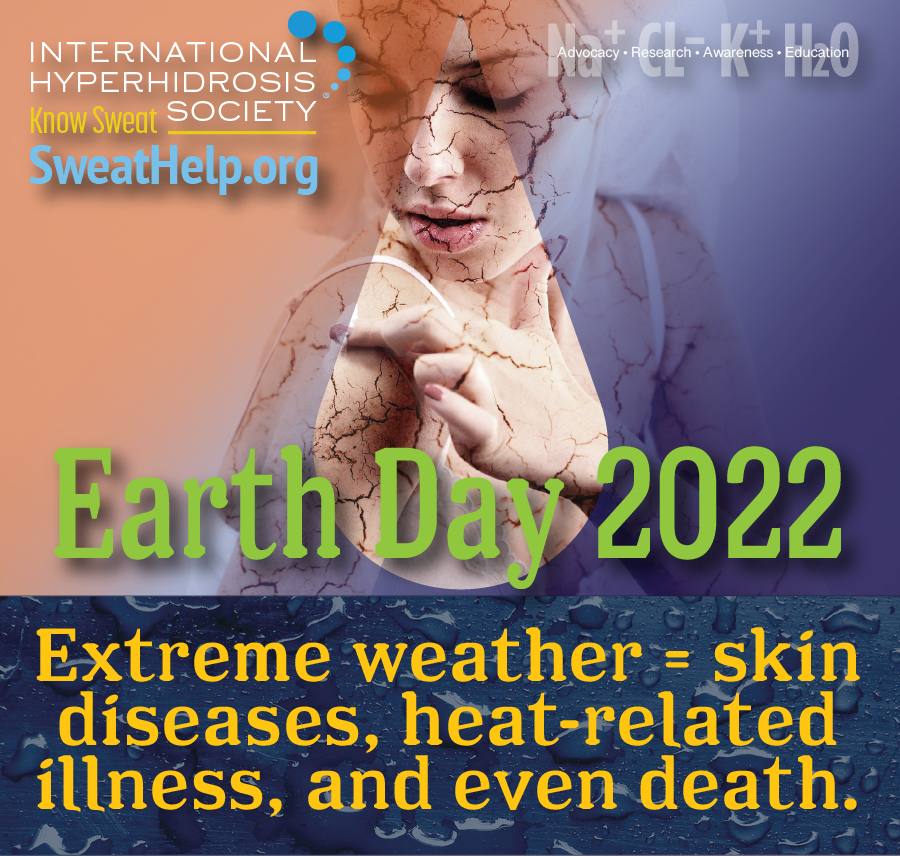

 Earth Day, Heat Illness, Hyperhidrosis & Climate:
Earth Day, Heat Illness, Hyperhidrosis & Climate:
How to Cope & Why Weather is a Dermatology Priority
It’s Earth Day and high time to make changes for a liveable future.
According to the managing editor of the journal The Dermatologist, “The skin is the body’s organ most exposed to the environment. Because of this direct connection, a growing group of dermatologists argues it is time for the specialty to take an active role in fighting the effects of climate change for patients and for the planet.”
From storms and floods to droughts and heat waves - the impacts of climate change are affecting us all, and our skin and hyperhidrosis is no exception.
Hyperhidrosis, as you know, is extreme, uncontrollable sweating that can happen unpredictably and regardless of the ambient temperature. It’s excessive sweating occurring beyond what’s expected or needed for the human body to cool itself and maintain a normal internal temperature.
But, when temperatures soar and humidity gets smothering, hyperhidrosis sufferers can sweat even more. Sweating is, after all, the body’s air conditioning. And in recent years, all over the world, sweat glands have had A LOT of work to do.
Recently sky-high temperatures have struck many parts of the world. Here are just a few of 2021’s jaw-droppers:
With heat waves becoming more common and more severe, it’s important for all of us to know how to stay cool and to recognize the warning signs of heat illness. This is especially crucial for hyperhidrosis sufferers who use oral anticholinergic medications to help control their sweating, because along with limiting unwanted focal sweating (like from hands, feet, and face), anticholinergics also inhibit all sweating.
Oral anticholinergics for managing excessive sweating include glycopyrrolate, oxybutynin, benztropine, propantheline, and others. They work by blocking the chemical messenger acetylcholine as it travels to receptors on the sweat glands that are responsible for triggering sweating. Because anticholinergic medications cannot target just one body area, they decrease sweating over the entire body, even in those locations where sweating is not a problem. This overall decrease in sweating can put the patient at risk for overheating and heat illness.
Dee Anna Glaser, MD, president and a founding board member of the International Hyperhidrosis Society, treats hundreds of hyperhidrosis patients a year and is well versed in anticholinergic use, either alone or in combination with other hyperhidrosis treatments. She cautions her patients thinking about anticholinergics saying, “When taking anticholinergics, the body may have more difficulty keeping itself cool with the sweat mechanism ‘turned off.’ Therefore, athletes, people who participate in sports, people who work outdoors, and anyone who may potentially cause themselves injury by becoming overheated must use extra care when considering these treatments.” In fact, experts suggest active patients, especially in hot climates, should likely NOT consider anticholinergics. For those who do use them, or parents of children taking the medications, it’s important to be aware of temperature, water intake, exertion, and any symptoms of overheating such as pale skin, dizziness, muscle cramping, weakness, headache, and nausea.
Tips for Keeping Cool
When the weather heats up, remember the following tips for keeping cool:
If you don’t have air conditioning in your home, school or office:
Recognize & Treat the Three Heat Illnesses
Scientists expect that we’ll have more and more days with temperatures hotter than 90°F in the future. And, extremely hot weather can even occur in places that have traditionally had cooler summers and in places where air conditioning has not been needed in the past (such as in the Pacific Northwestern U.S.). This means that around the world, we need to be more aware and proactive in preventing and caring for the three main heat illnesses including heat cramps, heat exhaustion, and heat stroke, which can be serious, and life-threatening.
1. Heat Cramps
Signs:
Muscle pains or spasms in the stomach, arms or legs. Usually occurring during heavy exercise in hot environments.
Treatment:
2. Heat Exhaustion
Signs:
Heavy sweating, cold, pale and clammy skin, muscle cramps, tiredness, weakness, fast or weak pulse, dizziness, headache, fainting, nausea, vomiting.
A less serious condition than heat stroke, heat exhaustion can progress to heat stroke without proper interventions.
Treatment:
3. Heat Stroke
Signs:
Extremely high body temperature (above 103°F when taken by mouth); red, hot and dry skin with NO sweat; rapid, strong pulse; dizziness, confusion or unconsciousness.
Treatment:
Heat stroke is a medical emergency requiring immediate medical help. Call 911 (or the equivalent in your country) or get the affected person to a hospital as soon as possible. While you wait for professional assistance, take care of heat stroke by:
The Importance of Climate Action for Public & Skin Health
The American Public Health Association has declared climate change a health emergency.
Climate Change Will Harm Skin in the Following Ways:
Here’s What YOU Can Do:
Climate change is not just an environmental activist issue or something to care about only on Earth Day or when a disaster strikes your area. It’s a hyperhidrosis issue, a dermatology issue, a public health issue, a local issue, an everyday issue, and a planetary issue, all at the same time.
By learning how to care for your skin, your body temperature, your psyche, and your community as we face climate change, you can be prepared to adapt AND continue fighting for a better tomorrow.
What are you already doing to help the planet we all call home? Tell us on social media so we can get more ideas and inspiration and support you!
https://twitter.com/WeKnowSweat
https://www.facebook.com/SweatingStopsHere/
https://www.instagram.com/weknowsweat/
#InvestInOurPlanet @EarthDay #KnowSweat
Latest Blogs